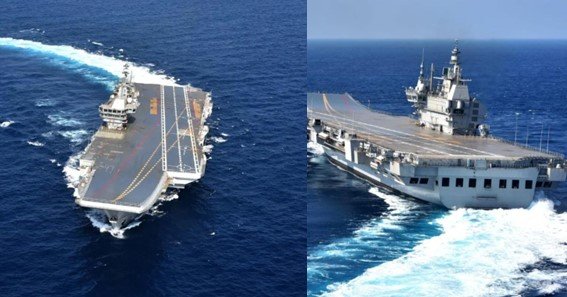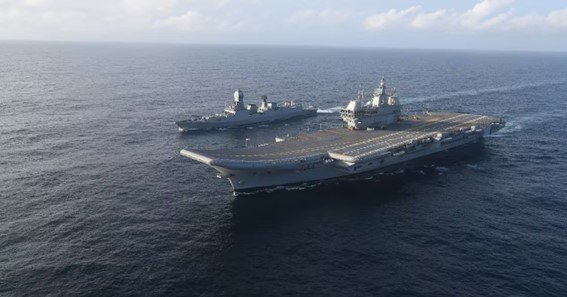The commissioning of India’s first indigenous aircraft carrier, INS Vikrant, marks a major milestone for Indian defense capabilities, built by Cochin Shipyard Limited (CSL). Launched on September 2, 2022, INS Vikrant has already positioned itself as a powerful symbol of India’s growing naval prowess. This 45,000-ton warship, developed under the ‘Aatmanirbhar Bharat’ initiative, strengthens India’s maritime security and is poised to play a pivotal role in the Indo-Pacific region. The success of INS Vikrant underscores CSL’s expertise and may soon lead to the construction of a second indigenous carrier.
A Milestone for Indian Naval Power
The construction of INS Vikrant was a monumental task, with Cochin Shipyard delivering a carrier capable of carrying 36 aircraft, including MiG-29K fighters and Kamov helicopters. Built with 76% indigenous content, Vikrant is the largest warship ever constructed in India. It took years of technological advancement, with the ship being powered by General Electric LM2500+ gas turbines and featuring advanced combat management systems by Tata Advanced Systems.
Strategic Significance
The aircraft carrier’s role extends beyond defense. It is a crucial component of India’s strategy to ensure maritime dominance in the Indian Ocean and Indo-Pacific regions, protecting vital sea routes and economic interests. The Indian Navy aims to operate three carriers to maintain a constant naval presence on both coasts and support operations in case of geopolitical tensions.
With China’s increasing assertiveness in the Indo-Pacific, INS Vikrant provides India a strategic advantage in countering regional threats. Its inclusion in the Navy’s fleet enhances India’s ability to project power across the region.
Cochin Shipyard and Future Expansion
Following the successful induction of INS Vikrant, CSL is preparing for a second aircraft carrier, IAC-2, which will incorporate even more indigenous technology. This aligns with the government’s focus on achieving self-reliance in defense manufacturing. The IAC-2 proposal, currently awaiting approval, is expected to displace 65,000 tons and include advanced systems such as arresting gear and precision approach radar. This new carrier will potentially feature HAL’s Twin-Engine Deck-Based Fighter (TEDBF), expected to be operational by the 2030s.
Enhancing India’s Naval Capabilities
The aircraft carrier INS Vikrant is not just a military asset but also a projection of India’s industrial and technological capabilities. The success of this project has made CSL a significant player in the global shipbuilding industry. Further, the IAC-2 proposal highlights India’s ambition to become a global hub for warship construction, providing opportunities for both domestic and international collaborations.

Conclusion
The Cochin Shipyard aircraft carrier program is a game-changer for India’s naval power, providing the nation with critical capabilities to defend its maritime interests and assert its presence in the Indo-Pacific. As INS Vikrant becomes fully operational and plans for a second carrier take shape, India’s naval strength will only continue to grow, reflecting the country’s rising stature on the global stage.
FAQ
- What is the significance of INS Vikrant? INS Vikrant is India’s first indigenously built aircraft carrier, marking a significant step towards self-reliance in defense.
- Who built INS Vikrant? INS Vikrant was built by Cochin Shipyard Limited, the largest shipbuilding and maintenance facility in India.
- What aircraft can INS Vikrant carry? INS Vikrant can carry 36 aircraft, including MiG-29K fighters, Kamov helicopters, and other advanced aircraft for naval operations.
- What is IAC-2? IAC-2 is the proposed second indigenous aircraft carrier, which will be built by Cochin Shipyard and feature more advanced technologies.
- How does INS Vikrant enhance India’s maritime security? INS Vikrant strengthens India’s naval capabilities, allowing it to maintain a strategic presence in the Indo-Pacific region and secure vital maritime routes.










